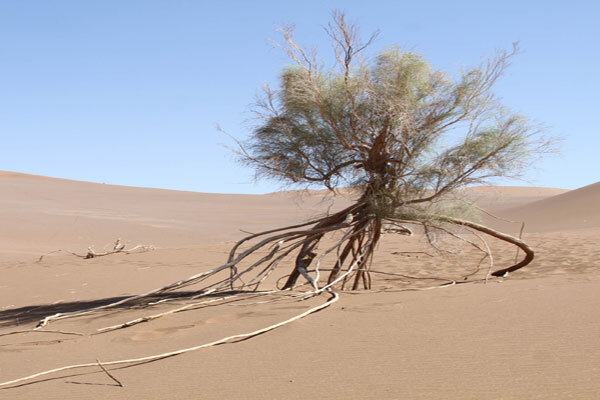Some 7m ha of deserts in supercritical condition

TEHRAN – Around seven million hectares of the country's deserts are highly threatened being in a supercritical condition, Masoud Mansour, head of the Forests, Rangelands, and Watershed Management Organization, has said.
About 32 million hectares of the country are covered by desert areas, seven million of which are in supercritical condition and 2.5 million hectares are dust-generating hotspots, he stated, emphasizing the need to reduce natural hazards.
One of the approaches we strongly pursue is to conserve two sources of water and soil with the participation of the people, he noted, adding, one of the ways to save the country is watershed management to preserve water and soil resources.
This [Iranian calendar] year (ending March 20), some 100,000 hectares of watershed management projects have been implemented with the participation of the officials and the people, he further highlighted.
"In addition, 50,000 hectares were targeted to reforestation, however, with the help of locals, the projected goal was achieved in 85,000 hectares," he added.
Referring to the water, soil, and vegetation as the major affected natural resources, he said that although these threats show their impact, in the long run, today the result appears in the form of floods, sand and dust storms, soil erosion, drying of wetlands and groundwater depletion.
Pointing to 16 tons of soil erosion per hectare per year, he stated that 250 million cubic meters of erosion have occurred annually in the dam's lake.
In addition, of the approximately 40,000 qanats, one-third are exposed to dehydration and drying, he lamented, adding, in the last 20 years, the country was haunted by more than 3,500 floods, each of which has incurred a considerable loss.
Deforestation in Iran worrisome
Ali Banagar, head of the forestry scientific association affiliated with the Research Institute of Forests and Rangelands, said that the trend of deforestation in Iran is worrisome.
Pointing out that deforestation is a global challenge, he said that drought, floods, extreme heat, cold, sand, and dust storms, as well as climate change, are natural causes of deforestation and reduce the quality of forests.
Apart from natural factors, villa and road construction, development projects, dam construction, wood smuggling, encroachment on forests and land grabbing, forest fires, coal mining, livelihood activities including agriculture, providing fuel and excessive livestock grazing, social and economic problems, and exploitation of natural resources, pests, environmental pollution and landfills, and many other factors have reduced the quantity and quality of forests.
Each of these variables has increased or decreased in recent years, but the result is alarming,” he explained.
Between 2015 and 2020, approximately 12,000 hectares of forests across the country were wiped out annually, IRNA quoted Reza Bayani an official with Forests, Range and Watershed Management Organization, as saying.
He went on to say that the country’s forests are estimated at 14.3 million hectares, lamenting, deforestation occurs for a variety of reasons, including dam construction, road construction, fire, and wood smuggling.
The country’s northern forests have been estimated at 2,080,000 million hectares about 60 years ago, and today it is stretching to 2,004,000 hectares taking replanted areas into account.
Meanwhile, Yousefali Ebrahimpour, commander of the protection unit of natural resources and watershed management department of West Azarbaijan province, said earlier that shortage of forest protection units, not enforcing laws, and low fines are among the factors exacerbating deforestation.
Each tree produces 2 kilograms of oxygen annually, so one hectare of trees can produce 2,500 to 3,000 oxygen which helps 10 people to breathe oxygen, while they can reduce the area’s temperature by 11 degrees.
As forests play a significant role in the carbon cycle, when are cut down, not only does carbon absorption cease, but also the carbon stored in the trees is released into the atmosphere as CO2 if the wood is burned or even if it is left to rot after the deforestation process.
According to climateandweather.net, forests store up to 100 times more carbon than agricultural fields of the same area, it is estimated that more than 1.5 billion tons of carbon dioxide are released into the atmosphere due to deforestation, mainly the cutting and burning of forests, every year.
Over 30 million acres of forests and woodlands are lost every year due to deforestation.
FB/MG
